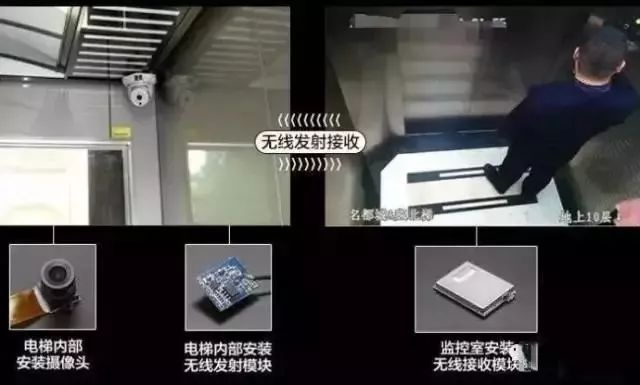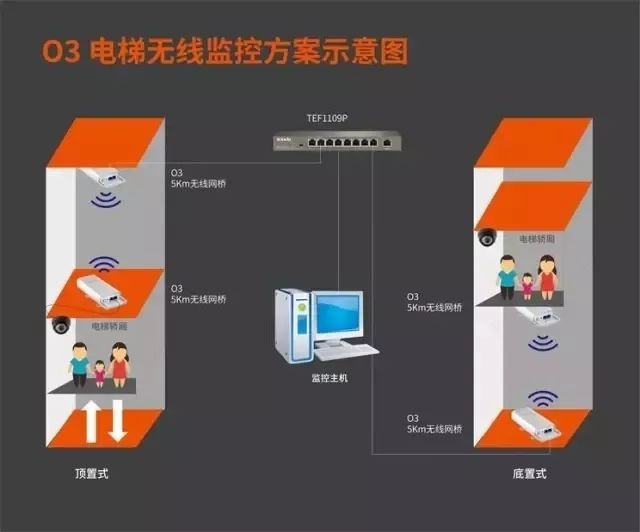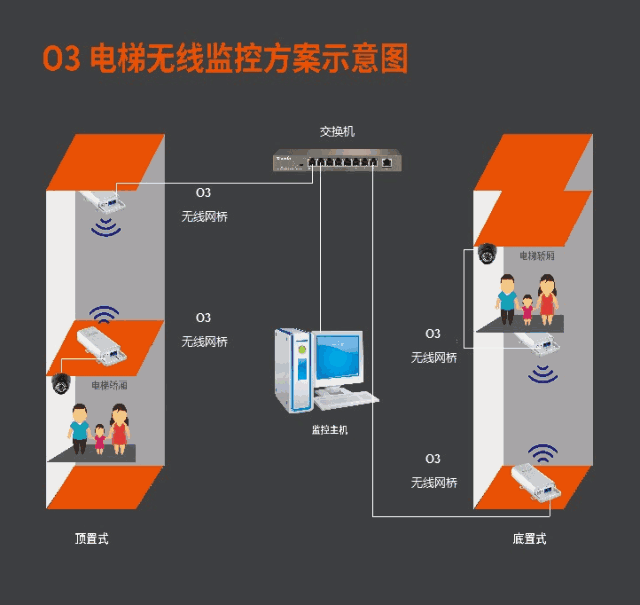

Elevator as an important closed public area of the building and the key access, elevator video monitoring plays an important role in the security work of the whole area, is an indispensable important link. Video monitoring can grasp the situation inside the elevator cage in real time to ensure the safety of passengers.
Elevator monitoring video transmission can be divided into wired and wireless. Cable transmission is a professional elevator trailing cable, the general trailing cable use of serious loss, life between half a year to a year. High-rise elevator cables have higher requirements on tensile strength and electrical parameters, which can prevent the impedance mismatch caused by tensile deformation of cables under load, and interference caused by video signal signal-to-noise ratio attenuation. It is difficult to replace the trailing cable again, the construction period is long, and the cost of replacing the trailing cable is also high. The other is wireless transmission. Wireless transmission adopts point-to-point mode. A launching point is installed on the cage and a receiving point is installed at the end of the elevator shaft. The wireless transmission equipment is simple to install and has a life span of at least 3 years

How to deploy
There are two ways to install elevator shafts to monitor video wireless transmission. Top and bottom, as shown in the figure below:

Top - mounted deployment is suitable for monitoring center at the top of building.
How to set the bridge
The bridge at the cage end should be set to the client (Station) mode, in which the bridge ACTS as a network card. Convert webcam video data from electrical signals to wireless signals.

The bridge at the end of the elevator shaft is set to AP mode. In this mode, the bridge and NVR are directly connected through the network cable, and the wireless signals received are directly converted into wired signals and transmitted to NVR.
In a word, the bridge near the camera is set to client mode, and the bridge near NVR is set to AP mode.
The bridge should be matched before installing into the elevator shaft.
Set AP mode
The bridge works in AP mode by default. Connect the computer directly to the bridge and manually set a fixed IP to the network card. The default management address of tengda bridge is 192.168.2.1, so we can configure the computer with an IP of the same network segment, such as 192.168.2.20. After setting the SSID and password of the AP end bridge, write down the parameters and save them.
Set client mode
Select the client mode after the cage end bridge enters the management interface, then scan the superior wireless signal, select the SSID of the AP end bridge, and enter the same password. Click the next step and change the management address of the bridge to IP of the same network segment, which is different from the AP end and the network card of the computer. In addition to 192.168.2.1 and 192.168.2.20 mentioned above, other IP of the same network segment can be used, such as 192.168.2.30.
Connectivity test
To ensure that the bridge has been successfully matched, a connectivity test needs to be done before installing the bridge into the elevator shaft. The steps are as follows:
(1) computer connection client bridge;
(2) keyboard press win+R, enter CMD and then enter, run CMD program;
(3) input ping 192.168.2.1(AP end bridge address).
The ability to ping indicates that the network bridge has been paired successfully, and it can be installed directly to the elevator shaft. If ping is not universal, then the bridge has not been paired successfully. Further checks are needed to see if the Settings are correct.
Install wiring and debug
Wiring is relatively simple, as long as the camera and cage bridge, elevator shaft bridge and NVR connection and power supply can be completed. As it relates to PoE power supply, it is strongly recommended to use Cat5e or above specifications.

In general, there is no strong interference signal in the elevator shaft. In case of interference, the channel can be adjusted to avoid interference. Directly choose 5G bridge transmission is also becoming more and more mainstream.
Final image

Common problems
Q: after the bridge pair from the client can ping through NVR address, is not out of the image how?
A: only in line with TCP/IP protocol webcam can bridge transmission, use private protocol can not oh, suggest to change webcam try.
Q: how many net Bridges are required for two side-by-side elevators in an elevator shaft?
Answer: at least three sets are required, one set in AP mode and placed in the center of the bottom of the elevator shaft, and the other two set in client mode and installed at the bottom of the car.
Q:Can I use the LAN port of the bridge to connect another bridge?
A: yes, but not too many levels.

Wechat Public Number